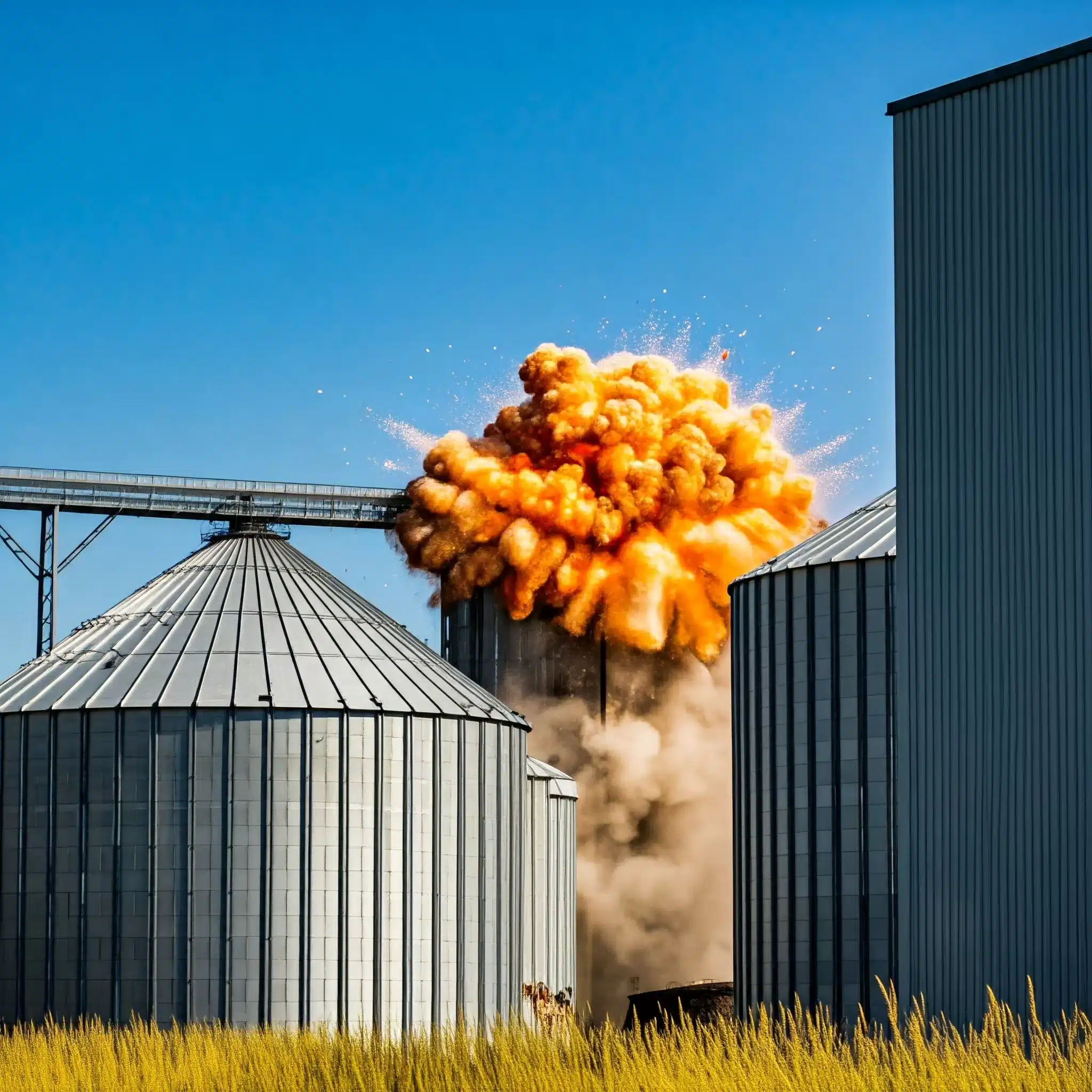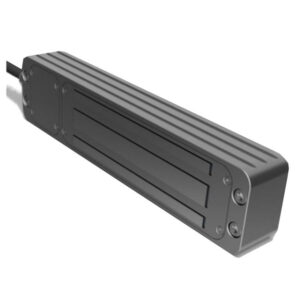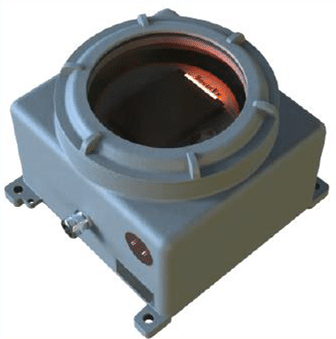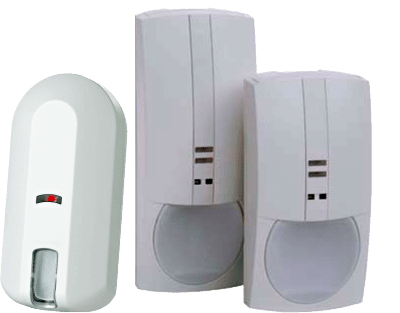SOLUTIONS FOR ATEX ZONES
Dealing with Dust Explosions in ATEX Zones: Real Solutions and Product Examples
Dust explosions are a significant hazard in many industrial environments, particularly those classified as ATEX zones. These zones are areas where explosive atmospheres may occur due to the presence of flammable gases, vapors, mists, or dust. Ensuring safety in these environments is critical, and it involves understanding the risks, implementing preventive measures, and using ATEX certified products.
Understanding ATEX Zones
ATEX, derived from the French term “ATmosphères EXplosibles,” refers to two European Union directives for controlling explosive atmospheres:
Directive 99/92/EC: This directive focuses on the safety of workers potentially at risk from explosive atmospheres.
Directive 2014/34/EU: This directive pertains to equipment and protective systems intended for use in potentially explosive atmospheres.
ATEX zones are classified based on the frequency and duration of the presence of explosive atmospheres:
Zone 20 is designated for areas where an explosive atmosphere in the form of a cloud of combustible dust is present continuously, for long periods, or frequently.
Here are some real-world examples of industries and environments that typically have Zone 20 areas:
Grain Silos and Mills: The inside of grain silos and milling equipment often falls under Zone 20 due to the constant presence of fine grain dust, which can ignite and cause explosions if an ignition source is present.
Sugar Refineries: The processing and storage areas in sugar refineries can be classified as Zone 20 because sugar dust is highly combustible and can be present in the air continuously.
Woodworking Facilities: Areas where wood dust is generated and collected, such as in sawmills and woodworking shops, are often Zone 20 due to the continuous presence of fine wood particles.
Pharmaceutical Manufacturing: Certain processes in pharmaceutical manufacturing that involve the handling of fine powders can create a Zone 20 environment, especially in areas where these powders are processed or stored.
Chemical Processing Plants: Facilities that handle fine chemical powders, such as those involved in the production of pigments or other powdered chemicals, may have Zone 20 areas due to the continuous presence of combustible dust
Zone 21 is defined as an area where an explosive atmosphere in the form of a cloud of combustible dust is likely to occur occasionally during normal operations. Examples include:
Flour Mills: Areas where flour dust is regularly but not constantly whirled up during processing, such as around milling and sifting equipment.
Pharmaceutical Manufacturing: Zones where fine powders are handled and processed, such as mixing and granulation areas.
Food Processing Plants: Areas where ingredients like spices, sugar, and starch are processed and packaged, creating dust clouds intermittently.
Metalworking Facilities: Zones where metal dust is generated during grinding, cutting, or polishing operations.
Zone 22 is defined as an area where an explosive atmosphere in the form of a cloud of combustible dust is not likely to occur in normal operation but, if it does occur, will persist for a short period only. Examples include:
Storage Areas: Warehouses where bags of powdered materials are stored and occasionally handled, leading to dust release.
Packaging Areas: Zones where products are packaged, and dust may be released during the filling or sealing processes.
Chemical Plants: Areas where fine chemical powders are stored and occasionally handled, such as during maintenance or cleaning.
Woodworking Shops: Zones where wood dust may accumulate and be disturbed occasionally, such as in storage or secondary processing areas.
Causes and Prevention of Dust Explosions
Dust explosions occur when combustible dust is suspended in the air in a high concentration, and an ignition source is present. Common sources of ignition include sparks from machinery, static electricity, and hot surfaces. To prevent dust explosions, the following measures should be implemented:
Dust Control: Regular cleaning to prevent dust accumulation.
Ventilation Systems: Proper ventilation to reduce dust concentration in the air.
Equipment Maintenance: Regular inspection and maintenance of equipment to prevent sparks and overheating.
Use of ATEX certified products: Ensuring all equipment used in ATEX zones is certified and compliant with relevant standards.
1. Industrial Vacuum Solutions
Industrial vacuum systems are essential for maintaining cleanliness and preventing dust accumulation in ATEX zones. Products like the Delfin ATEX-certified vacuum cleaners are designed to safely collect combustible dust. These vacuums feature multiple filtration stages, including HEPA filters, to ensure that even the finest dust particles are captured.
2. Explosion-Proof Lighting
Proper lighting is crucial in ATEX zones, but it must be explosion-proof to prevent ignition. ATEX Certified offers a range of explosion-proof lighting solutions that are designed to operate safely in hazardous environments. These lights are built to withstand harsh conditions and prevent any sparks that could ignite dust particle.
3. Dust Extraction Systems
Dust extraction systems are vital for removing dust at the source, reducing the risk of explosions. ATEX Certified provides advanced dust extraction systems that are compliant with ATEX regulations. These systems are equipped with high-efficiency filters and are designed to handle various types of combustible dust.
4. Personal Protective Equipment (PPE)
Workers in ATEX zones must be equipped with appropriate PPE to protect them from potential explosions. This includes flame-resistant clothing, anti-static footwear, and respiratory protection. ATEX Certified offers a comprehensive range of PPE designed for use in explosive atmospheres.
5. Monitoring and Detection Systems
Early detection of explosive atmospheres is crucial for preventing dust explosions. ATEX Certified provides advanced monitoring and detection systems that continuously monitor the environment for signs of explosive dust concentrations. These systems can trigger alarms and activate safety measures to prevent explosions. One of many potential causes of an explosion may be an intrusion into the EX zone by intruders who are not members of the company, unprepared and unequipped (special clothing) to be present in the restricted zone. This can be prevented by using ATEX certified products such as RFID readers, Ex electromagnetic locks, PiR sensors that can control, limit access to dangerous zones and detect intruders.
Conclusion
Dealing with dust explosions in ATEX zones requires a comprehensive approach that includes understanding the risks, implementing preventive measures, and using certified equipment. By adopting these strategies and utilizing products from trusted suppliers like ATEX Certified, industries can significantly reduce the risk of dust explosions and ensure a safer working environment. Pe Project offers comprehensive support in going through the rigorous ATEX certification process. With our knowledge and experience, we support our clients at all stages of the process.
SIGNO SX EX HID Card reader - access control in the EX area
The reliable SIGNO SX EX HID proximity card reader with its robust design works with both our access control products, door controllers and third-party access control systems to provide a highly effective solution for hazardous areas.




